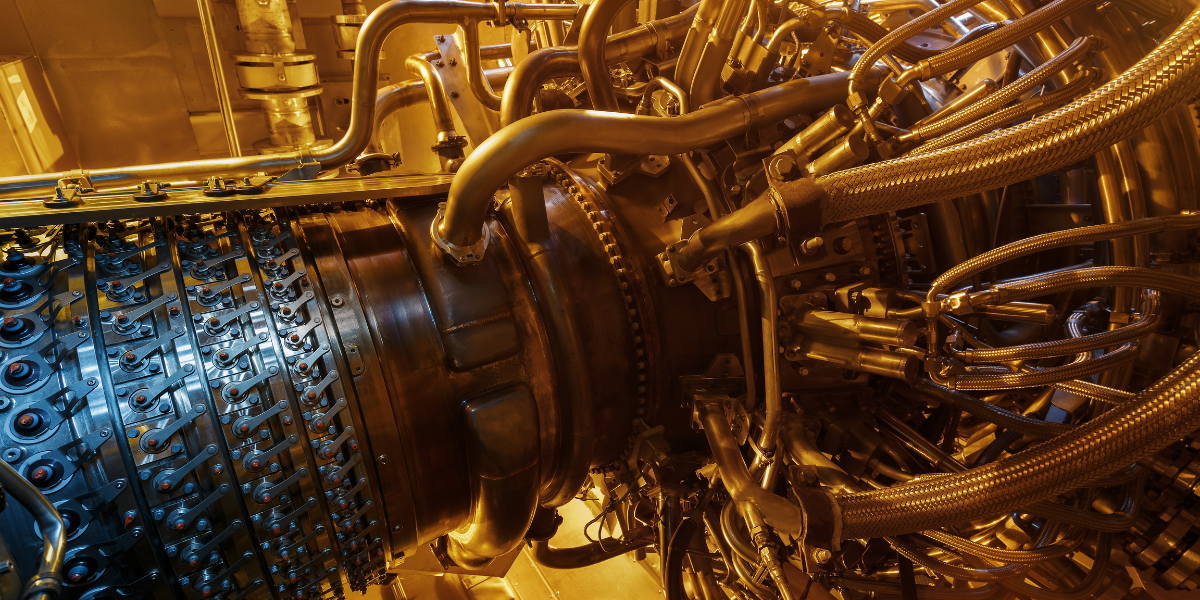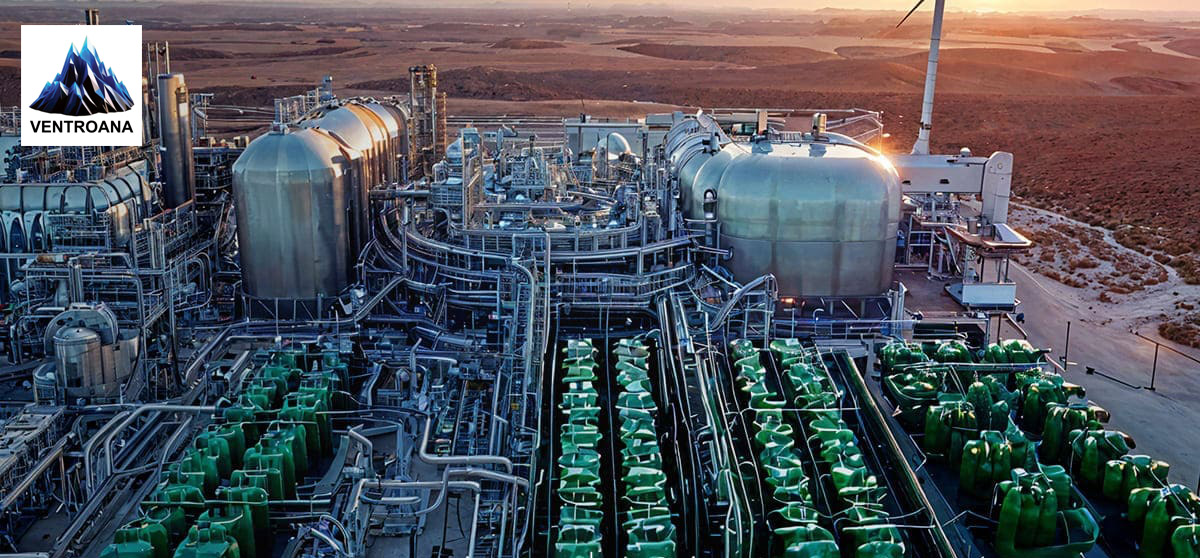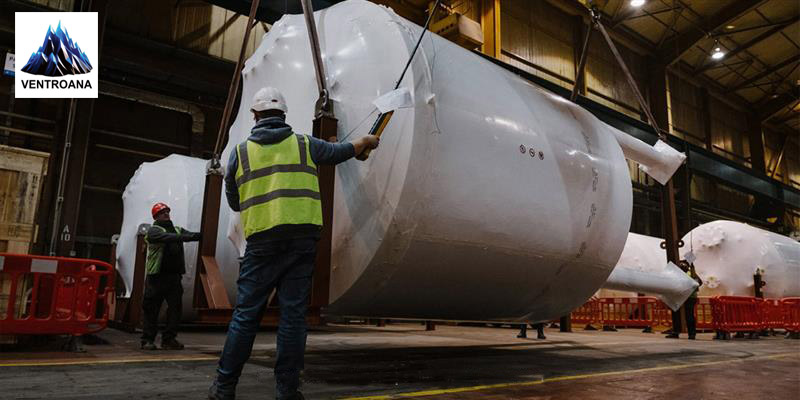Renewables
February 11, 2024

A typical turbine engine has a compressor to compress the fluid and increase the pressure of the incoming air before entering the combustor. Compressor performance has a significant impact on total engine performance. The compressor is a major component in the gas turbine engine, along with the combustion system and power turbine.
In this article, we will take an instant glance at the functions of compressor parts of a turbine engine in generating energy.
The compressor and turbine are primarily on the same shaft. The compressor drives and compresses the air. Then the fuel mixes and passes through the gas turbine at high pressure. After all the processes, it generates energy.
The engine's compressor section must provide a sufficient amount of compressed air to satisfy combustion requirements. Its other purpose is to provide bleed air for many systems.
The engine's compressor has the essential task of providing adequate compressed air to meet combustion requirements. It increases the air pressure received at the inlet and provides it to the combustion section at the desired pressure.
The shaft turns the blades in the compressor into the turbine. It rotates the intake fan at the front. This rotation takes energy from the high-energy flow that drives the fan and the compressor. The gasses generated in the combustion chamber move through the turbine and spin its blades.
Demand for gas power plants is increasing daily due to various benefits. Natural gas use is increasing as a fuel because other fuels may be synthetic gas. In a gas turbine, the hot combustion gas circulates through the turbine. It rotates the rotating blade. Rotating blades drive the compressor.
As in steam power plants, the operating fluid is a mixture of water and steam; in gas turbine power plants, the air mixture will work as the extracted fluid. It works with a turbine on one side and a compressor on the other in a jet engine. Air enters the compressor, mixes with fuel, burns up, and is driven out of the turbine.
A turbine engine's compressor consists of an impeller, diffuser, and a compressor manifold. Its two primary components are the impeller (rotor) and diffuser (stator). The function of the impeller is to gather and speed up the air outwardly to the diffuser.
The compressor has two basic types, axial flow and centrifugal flow. The way the air flows through the compressor is the typical difference between both types. Compressor parts' functions work differently according to the type of compressor.
In an axial flow compressor, the air compresses while continuing its original direction of flow. From entering to exit, the air flows along an axial path, and the compressing ratio is approximately 1.25 to 1.
An axial-flow compressor has two major components - a rotor and a stator. The rotor has blades attached to a spindle. These blades push air backward in the same way a propeller does. They are typically small airfoils. The rotor turns rapidly and affects the air through many stages. As a result, high-velocity airflow is produced.
After propelling the air through the rotor blades, it passes through the stator blades. The fixed stator blades act as diffusers at every step. They partially convert high-speed air into high-pressure. Each rotor is a compressor stage in this process.
Each compressor phase compresses the air even more. You can determine the number of phases by the amount of air and total pressure increase. The compression ratio gets higher if the number of stages increases.
In a centrifugal flow engine, the compressor does its job by lifting incoming air and accelerating it outward through centrifugal action. It consists of an impeller, diffuser, and a compressor manifold. Its two essential components are the impeller (rotor) and diffuser (stator).
The function of the impeller is to gather and speed up the air outwardly to the diffuser. It can be either a single entry or a double entry. Both have a built-in piston engine similar to a supercharger impeller.
The double impeller is similar to back-to-back two impellers. Due to turbojet engines' high combustion air requirements, the impellers are more significant than the supercharger impellers.
The main difference between the two impeller types is the duct size and arrangement. Double-entry types have smaller diameters but are usually operated at higher rotational speeds to ensure adequate airflow. The single-entry impeller allows easy ducting directly to the impeller eye, as opposed to the more complex ducting required to reach the rear end of the double-entry type.
Even though they are a little more efficient in receiving, the single-entry impellers must be more prominent in diameter to provide the same amount of double-entry type air. It increases the total diameter of the engine for sure.
A plenum chamber is the part of the turbine for double-entry compressor parts & engines in the ducking. This chamber is necessary because air must enter the engine from right angles to the engine axis. Thus, to give a positive flow, the air must surround the engine compressor at positive pressure before entering the compressor.
Many centrifugal flow compressor sections also include auxiliary air intake doors as an element of the plenum chamber. These doors supply air to the engine compartment during ground operation when the air needed for the engine exceeds the airflow.
When the engine is not working, the doors close by spring operation. During the process, the doors open automatically whenever the pressure in the engine compartment drops below the atmospheric pressure. During takeoff and flight, the engine compartment's air pressure helps the springs keep the door closed.
Ventro Analytics has excellent expertise in replacing compressor parts. If you're evaluating whether you'll lose yield or have a low surge, your compressor parts may require to be changed or fixed. We can assist you in evaluating which parts are needed to recover the lost output on your gas turbine compressor. You may call our trained team at; 1 888 7747632 to begin a chat with our experts. If you have some detailed queries, write to us at sales@ventroana.com
Tags: Compressor Boiler Gas Turbine Compressor Gas Turbine Engine Compressor Turbine Engine Parts Turbine Compressor Compressor Turbine Compressor Components Compressor In Jet Engine Jet Engine Compressor Function Of The Compressor Turbine Engine Components Parts Of A Turbine What Is The Function Of The Compressor Difference Between Turbine And Impeller Turbine And Compressor Role Of Compressor Parts Of The Compressor

Successful Implementation of Green Hydrogen in Power Plants
Discover how green hydrogen revolutionizes power plants with sustainable energy solutions, reducing ...

Driving Innovation and Resilience: Insights from the 10th Annual Energy Supply C...
Gain insights on driving innovation and resilience at the 10th Energy Supply Chain & Procurement Sum...

Understanding EPC Engineering: Key Concepts Explained
Discover the essentials of EPC Engineering, covering contracts, project phases, and roles of EPC con...